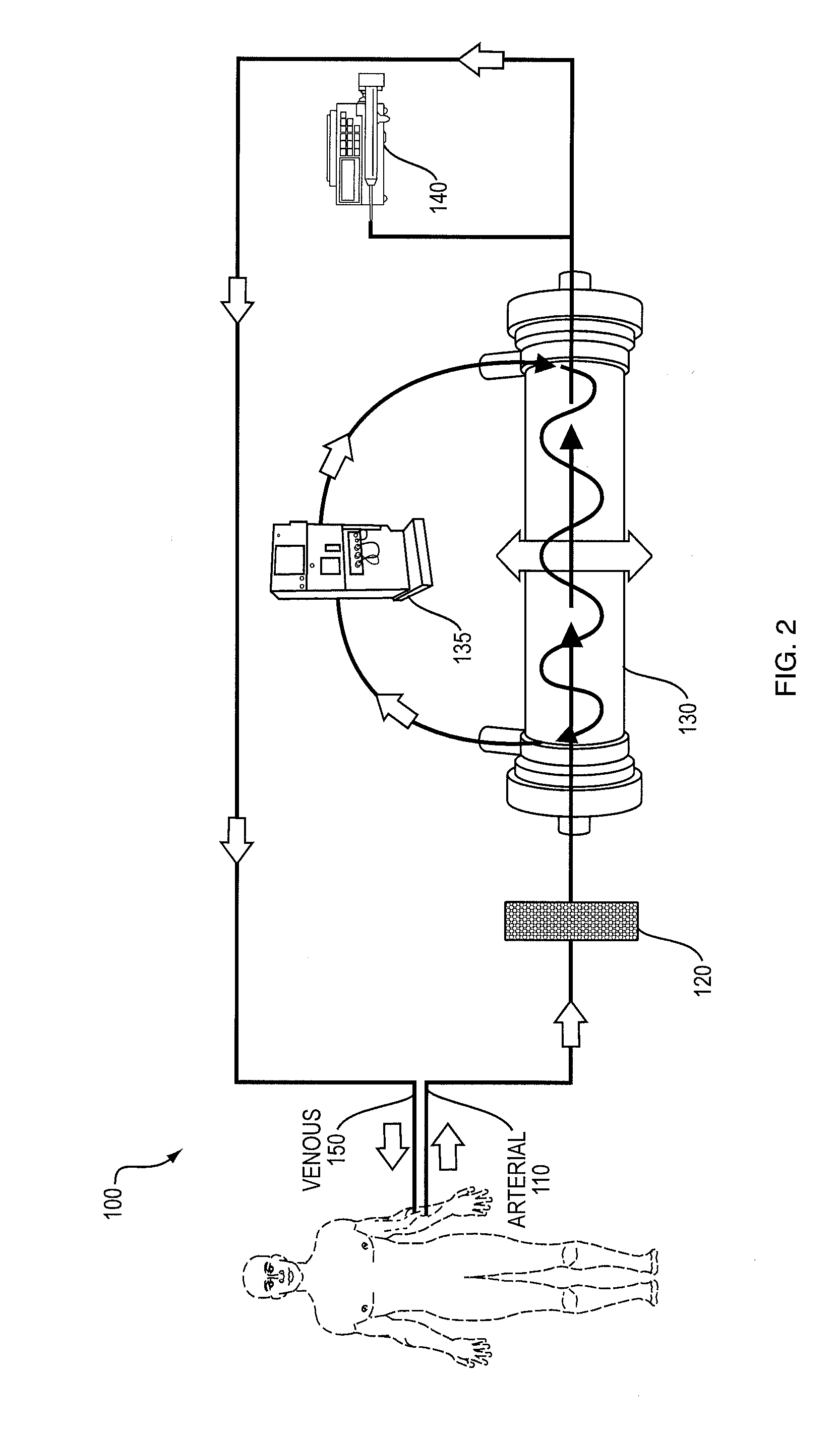Anticoagulant-free dialysis systems and methods
a dialysis system and anticoagulant technology, applied in the field of anticoagulant-free dialysis systems and methods, can solve the problems of occlusion, malfunction of extracorporeal circuit, loss of ability to remove water and minerals, etc., and achieve the effect of reducing the risk of occlusion, avoiding potential negative side effects of anticoagulants on the patient's health, and reducing blood clotting
- Summary
- Abstract
- Description
- Claims
- Application Information
AI Technical Summary
Benefits of technology
Problems solved by technology
Method used
Image
Examples
Embodiment Construction
[0019]In one embodiment, shown in FIG. 2, an extracorporeal blood treatment system 100 includes means 110 for withdrawing blood from a patient, such as a large bore dialysis needle (not shown), or a separate dialysis access device that connects to the patient's arterial system. The access device (not shown) includes a short tubular section, adapted at one end for connecting to an open end of the extracorporeal blood circuit tubing, and at the other end having a large bore dialysis needle for accessing the patient's arterial blood. Either or both of the extracorporeal blood circuit tubing and the access devices may include flow shut-off clamps and liquid access devices that have injection / administration port structures. The port structures provide mechanisms through which a dialysis administrator can, for example, safely access the arterial blood flow to remove samples of the patient's blood or inject drugs or liquids.
[0020]The extracorporeal blood treatment system 100 further includ...
PUM
| Property | Measurement | Unit |
|---|---|---|
| pH | aaaaa | aaaaa |
| blood flow rate | aaaaa | aaaaa |
| flow rate | aaaaa | aaaaa |
Abstract
Description
Claims
Application Information
 Login to View More
Login to View More - R&D
- Intellectual Property
- Life Sciences
- Materials
- Tech Scout
- Unparalleled Data Quality
- Higher Quality Content
- 60% Fewer Hallucinations
Browse by: Latest US Patents, China's latest patents, Technical Efficacy Thesaurus, Application Domain, Technology Topic, Popular Technical Reports.
© 2025 PatSnap. All rights reserved.Legal|Privacy policy|Modern Slavery Act Transparency Statement|Sitemap|About US| Contact US: help@patsnap.com



